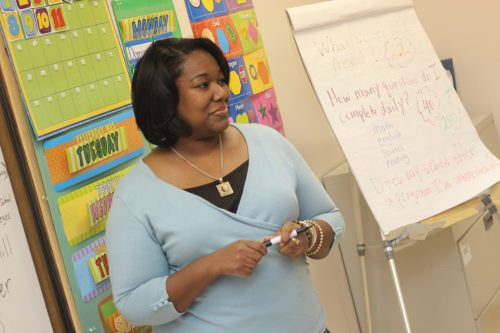Students with attention deficit hyperactivity disorder (ADHD) are a bit challenging to handle than other students. The reason for this is that hyperactivity, attention problems, and impulse control characterize their condition. If you are a teacher of children with this disorder, these tips can help you establish a structured classroom learning dedicated to instilling discipline and self-esteem in them.
Have The Proper Seating Arrangement
“Children who have been diagnosed with ADHD are at a much higher risk of developing noncompliant or negative behaviors than a child who does not have ADHD.” Kara Tamanini, M.S., LMHC explains. The classroom seating arrangement can make or break the attitude of your student with ADHD. Here are some guidelines to follow with regards to the positioning:
- Seat the student with ADHD near your desk or away from the doors and windows to avoid any distraction.
- Arranging chairs in rows is better than having them seated in roundtables, facing one another.
- Do not put students with ADHD beside each other to avoid any commotion.

Establish Classroom Routines
One of the best ways to accommodate someone with ADHD is to promote routine tasks. This way, they will feel more in control and disciplined with what they are doing. Some of these regular activities may include clearing the blackboard after class, submitting their homework every morning, and making them go to the bathroom every hour.
Help Them Organize School Works
Organization is essential for those who have ADHD. Since they have a low attention span, it might be difficult for them to keep things in order. Helping them be orderly is your job as their teacher. Here are some initiatives that you can do:

- Ask the student to purchase a master binder with a separate section per subject and make sure that every lesson or reminder goes into the right part of the notebook. You can also help them color-code each section tab.
- Teach the student a system for writing down important dates and assignments. Make sure to keep it simple.
- Have a readied envelope where he or she can insert parent notices such as PTA flyers and permission slips.
- Provide a checklist where they can note their everyday tasks.
Prepare Them For Transitions

One of the things that make them rattled is a transition. The best way to address this is to remind the student of what is going to happen next (recess, next subject, time for a different book, etc.). You may also help them prepare with starting and ending the day to assist them in the house-to-school transition. You can talk about things that went on in their homes and connect these scenarios to whatever is happening in the school. Because as Ben Martin, Psy.D elaborates, “When people think about attention deficit disorder (ADHD), they usually consider it a childhood problem. However, a large proportion — between 30 and 70 percent — of children with the condition remain affected throughout adulthood.”
Establish Rules In The Classroom
It is vital to establish several rules in the classroom to help them have a sense of responsibility. However, you need to give incentives and rewards first before punishing them to motivate them to do well. Make sure to change the awards frequently to prevent the student with ADHD from getting bored.
Finding the perfect combination of these strategies in handling children with ADHD is your responsibility as a teacher. If you apply these teaching techniques regularly in the classroom, rest assured that it will benefit not only those with the disorder but also the other students in the learning environment.
“People with ASD are at increased risk for depression, anxiety, obsessive-compulsive disorder (OCD), or attention deficit hyperactivity disorder (ADHD).” –Eva A. Mendes LMHC
